Nato Thompson is an American curator at the New York–based public arts institution Creative Time. He holds a BA in Political Theory from the University of California at Berkeley and an MA in Arts Administration from the School of the Art Institute of Chicago. Since January 2007, Thompson has organized major projects for Creative Time such as Democracy in America: The National Campaign (2008), Paul Chan’s acclaimed Waiting for Godot in New Orleans (2007) and Mike Nelson’s A Psychic Vacuum. Previous to Creative Time, Thompson worked as Curator at MASS MoCA, where he completed numerous large-scale exhibitions such as The Interventionists: Art in the Social Sphere (2004), a survey of political art of the 1990s, with a catalogue distributed by MIT Press. His writings have appeared in numerous publications including Book Forum, Art Journal, tema celeste, Parkett, Cabinet and The Journal of Aesthetics and Protest.
He is the editor of Experimental Geography: Radical Approaches to Landscape, Cartography, and Urbanism, The Interventionists: A Users’ Manual for the Creative Disruption of Everyday Life, a survey of political art of the 1990s, and Ahistoric Occasion: Artists Making History.
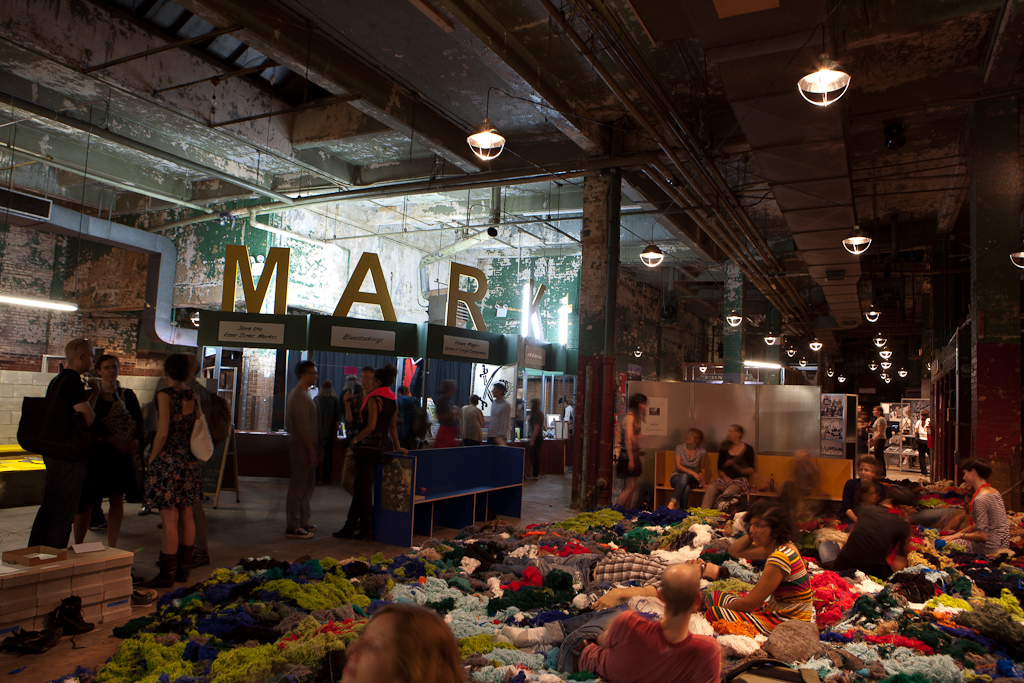
Temporary Services’ Market at the historic Essex Street Market in Manhattan’s Lower East Side during Creative Time’s Living as Form exhibition. Photograph by Sam Horine, courtesy Creative Time.
In 2012, Living as Form: Socially Engaged Art from 1991-2011 edited by Nato Thompson will be published by MIT Press. It surveys more than 100 projects selected by a thirty-person curatorial advisory team. Some of the artists featured in the book are the Danish collective Superflex, Jeremy Deller, Women of Waves, and Santiago Cirugeda. Living as Form grew out of a major exhibition at Creative Time in New York City.
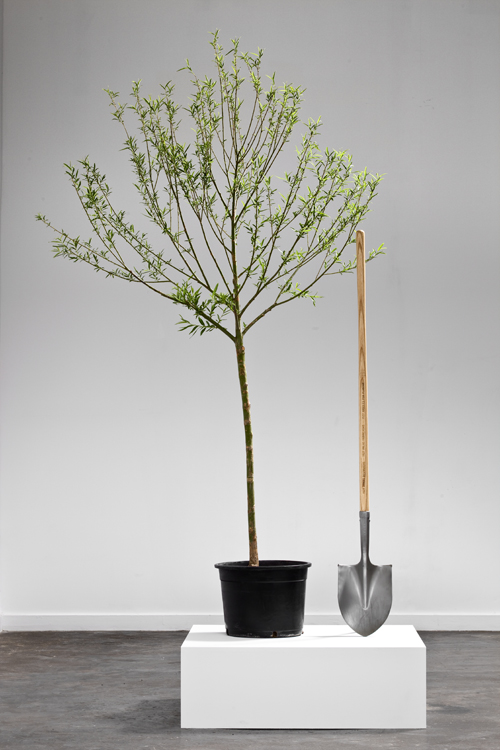
In Pedro Reyes’ "Palas por Pistolas," 1,527 shovels were made from the melted metal of 1,527 guns collected from residents of Culiacán, and used to plant 1,527 trees in the community. Courtesy Pedro Reyes and LABOR.
Thompson is also the author of Seeing Power and Activism in Age of Cultural Production (published by Melville House), where he highlighting the work of some of the most interesting artists and activists working today.
With a hot-art-potato at hand, I am pleased to present to you Nato Thompson.
Georgia Kotretsos: Living as Form: Socially Engaged Art from 1991 – 2011: What took place the last 20 years leading to the projects and works discussed in the book?
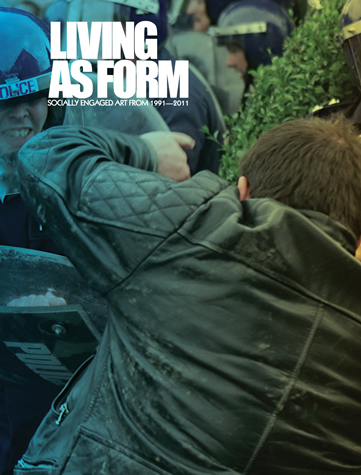
Living as Form Socially Engaged Art from 1991-2011. Edited by Nato Thompson. Contributing authors Claire Bishop, Carol Becker, Teddy Cruz, Brian Holmes, Shannon Jackson, Maria Lind, Anne Pasternak, Nato Thompson.
Nato Thompson: Well certainly the obvious thing to consider is the post-Cold War landscape. The fall of the Berlin Wall and the implosion of the Kremlin certainly set the stage for a pronounced different political landscape. That said, in activist terms there became an increasing dependence on cultural work as an integral element in forms of resistance over the course of the last twenty years. Culturally produced spectacle as a way of navigating the world became an increasing backdrop to politics and activism alike.
GK: “[…] Resistance with the producing of meaning in the world is inherently a battle with the spectacle itself,” you tell us in your lecture about “Living as Form.” Could spectacular resistances also be affective on socio-political advanced soil acted out by groups saturated with, and habituated to, spectacular displays? When does a society become numb to the sensationalism of resistance, and how could this battle be re-considered?
[vimeo:https://vimeo.com/27289754]
NT: The question is not only when does a society become numb, but of course, what to do under those conditions? The cumulative effects of spectacle, that is living in an age where culture is a weapon against us, has produced a sort of schizophrenic landscape where we don’t trust anything. We can see it in the rise of paranoiac politics including the Tea Party but also an entire world that not only doesn’t trust major media, but simultaneously, depends on a sort of negative voyeurism to get through the world. In a sense, much artistic practice grounded in tangible politics is an attempt to ground the gesture of politics in something a viewer could trust as legitimate. “Keeping it real” isn’t just a phrase about how to behave, but also a way of saying that the world is so full of things that are fake, one has to become experimental to make things actually be something.
GK: Where is all the rightwing political art–to paraphrase the question Paul Schmelzer raised in 2009 on the Art21 Blog, among other places? I’ve entered and stood in spaces where a leftwing show was so tightly packaged, I felt myself torn between such harsh divisions “How can you create the conditions for dialogue, without the manifestation of arguments coming from both, or several sides?”
NT: It is a myth that there is a right wing and a left wing. There are certainly different cultures catered to in different ways. In the United States, the culture that is deemed right wing certainly has their own cultural niche markets and forms of resistance. They wouldn’t be considered “the arts” but that is just more of an antiquated ethnographic category. Yes, they have cultural expression that is acted out on the landscape of spectacle like anyone else. I think the arts and its corollary infrastructures are more an outgrowth of that culture we call left wing. Conversations across the right wing and left wing continue to fall into these bizarre reductions that make it seem like the political world falls into these neat categories. The question probably should be asked, “what kinds of conditions need to be produced where power can actually be confronted and redistributed?”
Power is beyond a right wing/left wing paradigm. Cultural producers are part of the world we live in right now. They are not just artists. And it should be said, cultural production is just a form of being in the world. It isn’t necessarily resistant to power but more of a reflection of its current manifestation. What we need to figure out is how to work across this landscape where culture is a dynamic of capital so that points of resistance can be modified. It truly isn’t about right/left.
GK: My phone rings more often these days, and I reach out for it too – more than I used to, wanting to connect with artist friends in Athens. There is a lot of nodding in agreement that’s taking place as we’re saying “we are not art activists,” in spite of our current political beliefs and stances, or how we may all choose to participate in society outside of our creative parameters–“we will not illustrate the news headlines.” More than ever, we need to exploit the poetics of art – reflecting our time and not opportunist expectations of what political art production should be. That is perhaps the most important conversation that’s taking place among contemporary artists of my generation today. What do you make of this?
NT: Culture and politics are deeply integrated in contemporary life. The term artist is an antiquated idea in trying to come to terms with this reality. It can be a useful category because the skillsets of artists are being deployed by power in various forms. But the manipulation of cultural symbols is nowhere remotely the sole purview of artists. Not only are the culture industries involved in this, but in fact, every major industry comes with its own “art department” in the guise of communications consultants, designers, and PR teams.
Side-stepping the term “art activists” is reasonable in that one must come to terms with the fact that these mechanisms of power would never refer to themselves with such antiquated terms. It is sort of besides the point. Culture and activism must at this point be integrated into the same concept. They are not separate. This is simply the way one must work in the world. Manipulating the symbolic on the terrain of spectacle is just a necessary way of being. Doing it to resist power, it is just practical.
GK: How has Occupy Wall Street affected cultural production in the States, and how might it do so in the future?
[youtube:https://www.youtube.com/watch?v=go0jKIbfIcQ]
NT: I have no idea. What is interesting to think about is that many folks involved in OWS came out of art and are simply working as organizers. Art is but a skillset in a range of things necessary to contest power. The artworld as traditionally defined can never take this into account only because the underlying infrastructure of the traditional arts is a very limited niche market of luxury goods.
The broader spectrum of people trying to make a just world will inevitably have to take into consideration the historic role and realities that OWS will have or have not produced. For now it is great that some semblance of hope has emerged. But of course, overthrowing capital is a long hard road. This is just another part of that story.
And, that’s a wrap!

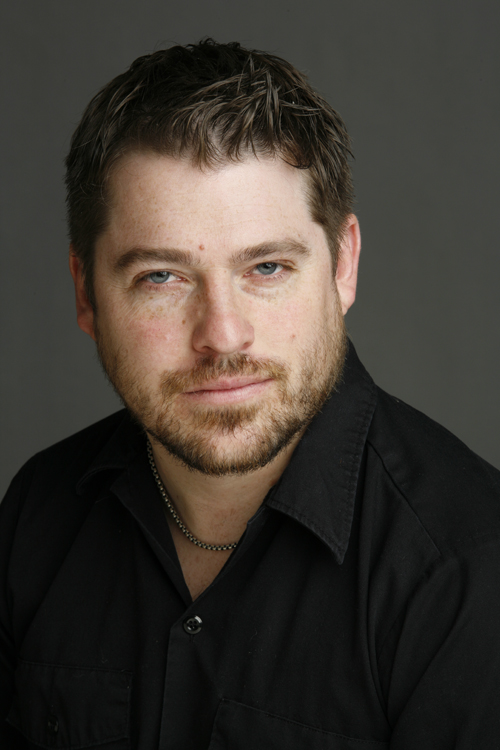
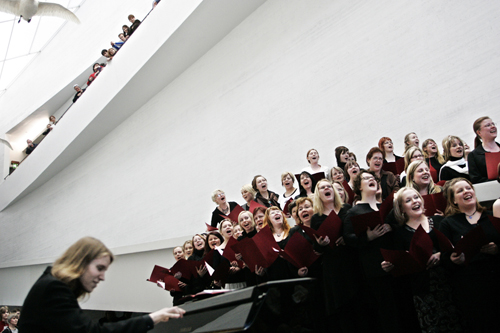



Pingback: Inside the Artist’s Studio | Nato Thompson | Art21 Blog : Justin A. Langlois